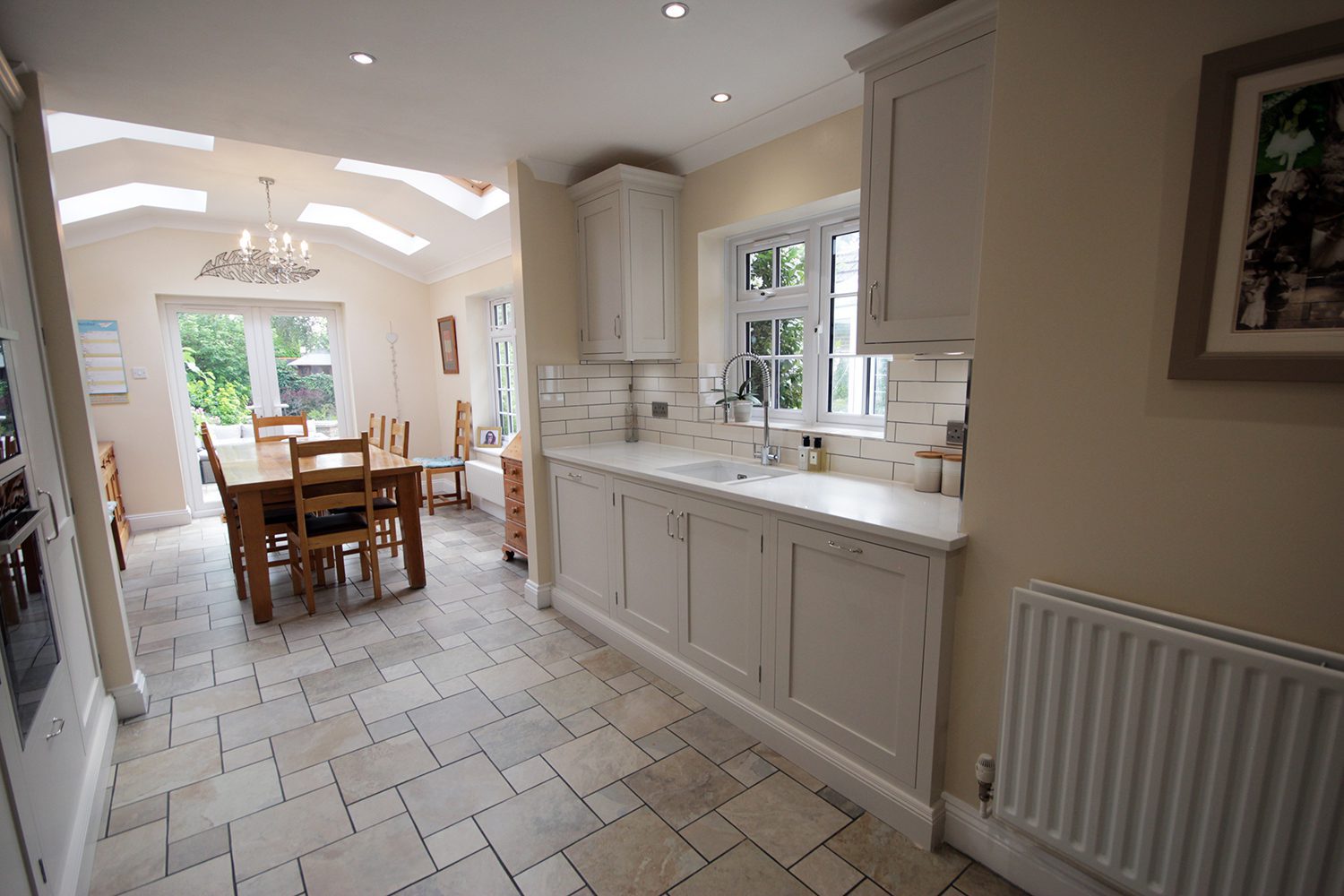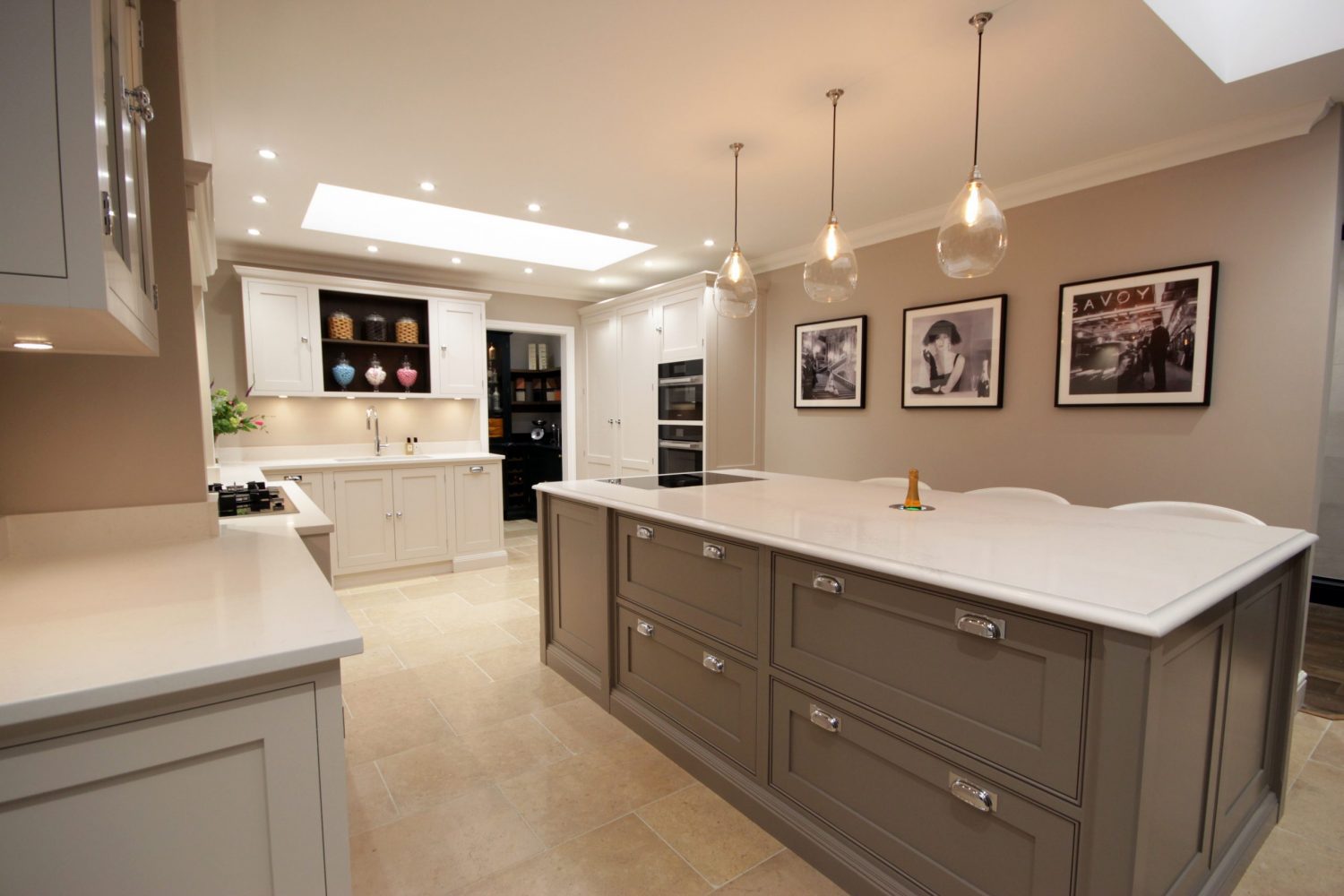When updating or replacing a kitchen, one of the key aspects to get right is the flooring. Kitchen flooring has a particularly rigorous set of challenges to meet, and you need to bear these in mind when choosing flooring for your kitchen.

First and foremost, you want your kitchen flooring to look stylish. Not only does it need to fit in with the overall colour and design theme of your kitchen, it needs to have the wow factor. So any old flooring just won’t do!
But on the other end of the spectrum, your kitchen flooring needs to earn its keep. It needs to be durable, waterproof, and easy to maintain. When you think of the array of feet that will be plodding through the kitchen, and the constant potential for spills and breakages, your kitchen flooring needs to be tough!
In this article we take a quick look at three of the most popular types of kitchen flooring, with a few pros and cons of each.
Tiled flooring
At Stone and Chrome we love natural stone tiling! It looks stunning on kitchen floors and is extremely durable and long-lasting. It is waterproof and easy to maintain. Stone tiling comes in many different sizes, colours and styles, and can be laid in whatever pattern you choose.
The first image below shows some smaller stone tiles that really enhance the light and airy colour scheme of this galley kitchen. The pattern is eye-catching and interesting, without being overwhelming.

Contrast the above tiling with that shown in the image below, of one of our in-frame shaker bespoke kitchens. Here there are larger stone tiles in similar colours which add a seamless finish to this stunning kitchen.

At Stone and Chrome we use a variety of different stone materials, including travertine, marble, slate and granite. Other options to consider are ceramic or porcelain.
Wooden flooring
Wooden flooring is another popular choice for kitchen flooring today. It is available in many different shades and textures, and can be configured in different layouts to work with your kitchen design. If you share our passion about preserving the forests for future generations, you can opt to use environmentally sustainable wood from well managed responsible forests.
Wooden flooring is not waterproof but can be given a water-resistant finish to minimise the impact of spills. If you are concerned about it being slippery – especially if you have children or pets – you may want to consider adding one or two rugs with non-slip pads.

A cheaper alternative to wooden flooring is laminate flooring, which can mimic the look of wooden flooring and is also available in a waterproof version.
Vinyl flooring
A third option to consider is vinyl flooring. Your first thought may be that this is very outdated, but vinyl has seen a resurgence in recent years and is now a popular flooring alternative. Vinyl flooring is available in different shapes and sizes – including tiles and planks – so it can mimic the look of wood and stone.
For example, the kitchen below has wonderful stone flooring, but you could mimic this look with good quality vinyl flooring.

Vinyl flooring has the advantage of being completely waterproof and is comfortable to walk on. It is also easy to clean. However, a disadvantage can be that it is a relatively soft material, which can easily be dented or scratched, so is not as sturdy as either tiled or wooden flooring.
So when you are planning a new kitchen, remember to give careful consideration to the best kind of flooring for the needs of you and your family. At Stone and Chrome we’d be happy to advise you further on this. So why not drop in and see us at our Camberley showroom so we can help you get things moving.
